The 50 States Project is a series of candid conversations with interior designers across the country about how they’ve built their businesses. This week, Overland Park, Kansas–based designer Kara Kersten tells us how she learned to “depend on other people’s genius,” why she launched a new affordable consulting service, and how she became matter-of-fact about billing large amounts.
You realized very early that you wanted to pursue design as a career. What sparked your interest in the field?
I was drawing floor plans as a kid for fun. I asked my parents, “What do you call someone who does that?” And they’re like, “Oh, that’s an architect.” And I was like, “OK, that’s what I’m going to do.” I don’t think I even knew what it was called, I was just mapping space in my brain. Once I figured out, “OK, this is a thing that people do,” I would buy house plan books and go through them for fun.
My parents let me do whatever I wanted with my room, which I loved. I could pick the paint color, and I could be wild and they didn’t throw a fit about it. I rearranged my furniture, made tents, and one whole wall was a bulletin board that I put everything on earth on. I have tried to let my own kids do that, but it’s hard when I want to control the look of my environment. But I appreciate that my parents didn’t care.
What surprised you about design school?
I went to college with the intent of going into architecture. At Kansas State, everyone’s in one big pile the first year, [a general curriculum that] they call environmental studies. After that, you apply to be in a specific group—architecture, landscape architecture, interior architecture and product design. In that first year of classes, all of the interior architecture professors seemed way more fun and way more colorful. They had a woodshop where you could build furniture. The projects seemed more artistic and less mathematical. I liked that.
Did you have a clear sense as you were leaving school of how you wanted your career to unfold?
Things got fuzzier at that point. In architecture, it was pretty cut and dried: You went to an architecture firm out of architecture school. But with the interior architects in my program, there were people working for Disney; there were people doing retail and product design for exhibits; there were people doing commercial interior design; there were some doing residential. You could even do set design or furniture design. It was a little bit more wild.
I always loved residential design—I was more interested in how someone lived than how they worked—but I figured that the natural progression was to work for a commercial firm first. But when I graduated, I wasn’t getting offers from those firms like some of my friends were, so I ended up getting a job with the custom home builder that remodeled my parents’ house when I was in college. I jumped straight into residential design, but from a builder’s perspective.
What did you learn from that job?
On days that were slow in the office, my boss would have me come out to the job sites and clean them—just sweep all the sawdust with the guys. They were working on these gorgeous homes—one was an addition and gut renovation on this beautiful lake house, and I was there sweeping the sawdust looking out toward the lake. At the time, I was like, “Really? This is what I went to school for?” But he said, “Kara, you’ll never know the intricacies of a job until you clean it.” And honestly, that’s how I would catch all the little things that had been missed. It was one of those [moments] that felt like, “I’m at the bottom moving up.”
I look back and really appreciate it, because I know how everything’s built and put together and the process that everyone on-site goes through. It’s definitely given me an edge on understanding the construction process and knowing how a contractor’s brain works. I really am not their adversary—I know what they need and I know how to get it to them quickly and in a way that’s organized and efficient.
I worked for [that builder] for about a year, and then the recession hit in 2008. All my friends were getting laid off from their corporate architecture firms, and my hours started to dwindle too. I decided to update my resume and have it ready, but I worked retail and I nannied—I was just kind of getting by and waiting to see what would happen. My uncle, who is an entrepreneur—he started his company right out of school and has done really well—said, “Kara, you don’t have a high income that you’ve gotten used to. You don’t have kids yet. You have time. The only thing you’re lacking is more experience working for others. But you’ve got nothing to lose if you want to just start your own thing now. You can only go up.” So I kept nannying and working retail, but I got my tax ID number and started doing small projects for family and friends in 2010.

What were those early years like?
Everything was definitely small, and mostly for people I knew. But it grew little by little—and because of my history, I found myself working mostly on construction projects. I didn’t do lots of furniture—it just wasn’t my focus—but I would help people. And then the projects just got bigger and bigger and bigger. Four or five years ago, I invested in coaching, and then things really took off. I started to get more structure in my business, more boundaries; I priced better, had a better letter of agreement—things just got buttoned up tighter. And then it started to feel like, “OK, now we’re rolling.”
What prompted you to hire a coach?
The coach was in town for a speaking engagement, and I think it cost $50 to go. I remember thinking, “Oh, that sounds really interesting. I would like to go to that,” but I was out of town that week. And I was talking about it to one of my friends—I was like, “You know, if she comes back, I would love to go to that. But it’s $50. Do I really want to pay to go listen to her talk?” And my friend said, “Seriously, Kara? If it’s about making you more money, could you make that money back just from what you learned in that one hour? If you can make $50 more, then it’s already paid for.” That changed my thinking.
I kept following that coach—getting email blasts and listening to little snippets of advice. I had changed from charging hourly to fixed fees, and in that one year, I had already made $25,000 more without even hiring her. And I thought, “OK, if I can do that without even paying her, what can I do the next year when I do?” And then that next year, I almost doubled my income.
Where did you make changes to see those kinds of results?
There was a lot of focus on mindset, so it felt personal and reflective, which is how I like to work. I was able to do a little at a time, and still feel successful and like I was progressing, and not feel guilty that I wasn’t not doing enough or doing it quickly enough. I was able to focus on one thing at a time: my marketing, my welcome packet, my intake process, my letter of agreement.
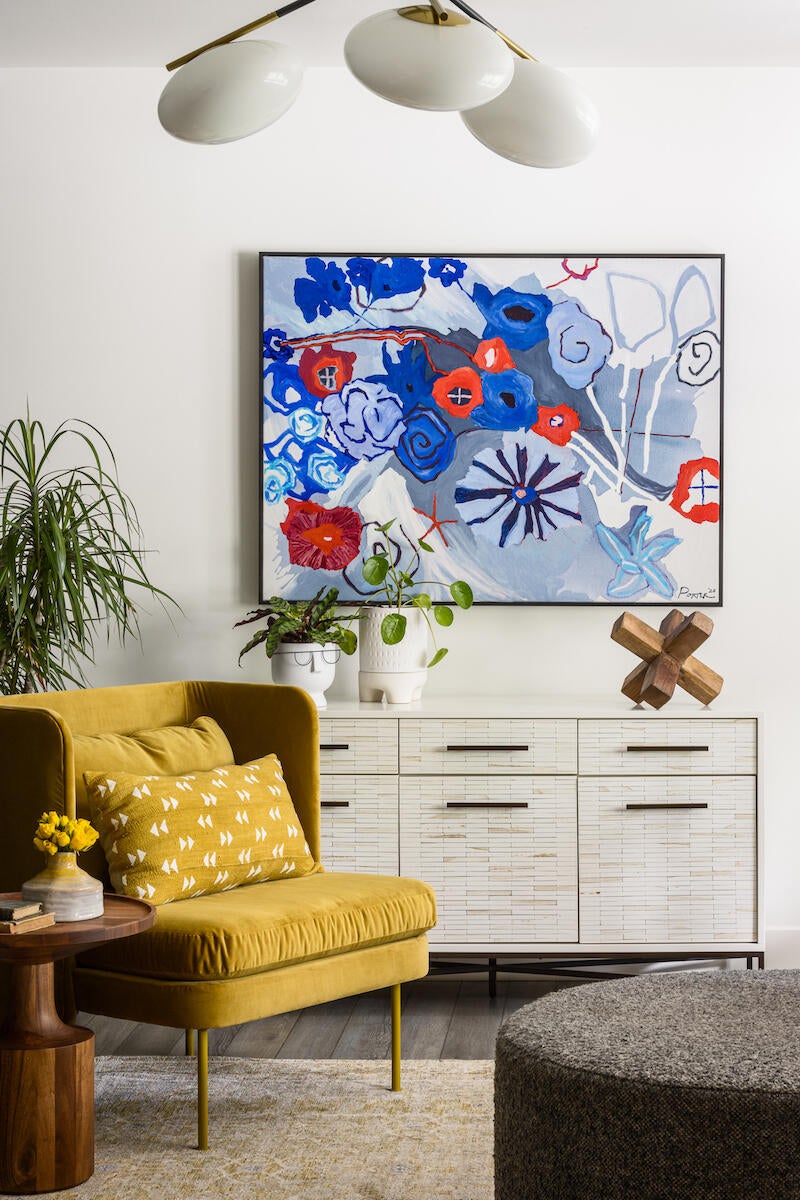

What did your team look like at that point?
It was just me and I was working from home. But once I got deeper into coaching, I realized I wasn’t dreaming big enough. The sky’s the limit: If I want this business to grow or become scalable so that I could sell it when I want to retire—that’s something I’d never even thought about before—then I could make it bigger. So at that point, I began to focus on learning more about growing my team and how to delegate. I started outsourcing the work I wasn’t as good at.
Some clients would ask me for help with furnishings after a whole remodel, which I was not comfortable with for a really long time—I was not great at it, and I didn’t learn a lot about fabrics and window treatments and those kinds of things in school, so I used to pass them off to someone else. Then I realized, I’ve spent this whole project getting to know these people and they feel safe with me. I am doing them a disservice by not finishing it for them. But it isn’t the part that I’m the best at. So I started subcontracting that portion to friends who were also designers in my city so that it still felt like it was through me, but they could do better at picking that kind of thing out and knowing what to suggest and how to handle it.
Eventually, I also hired a virtual assistant and a bookkeeper. I collaborate with architects and structural engineers, but we have our own separate contracts. So it feels like my team has grown by depending on other people’s genius, even if they’re not employees. I still don’t have any full-time employees, but that is a goal. I’m just trying to hit some numbers first.
What role would you be hiring for?
I would like an assistant to do a lot of admin work, and then another who’s helping with design work. What I found was it didn’t work great when the assistant had a design background but was doing admin. But when our projects are three-fourths of the way done, little things are still trickling in and the project is wrapping up, that’s when I’m getting started on the next project—I want someone who’s really taking care of the clients, holding their hand and making them not feel forgotten. I know my personality isn’t as good at the follow-through, so I need someone in that admin role to focus on client satisfaction.
That’s great to know that about yourself, and that you can see the window of opportunity in your business.
I need the person that finishes the race really well.

When you look ahead, where do you see the most opportunity for your firm?
I’ve been trying to do a little bit of soul searching and figure out what really makes me me. For a while, I was part of the herd, trying to follow and see what others were doing. There’s just a lot of influence around you, which can be great for community, but not great for setting yourself apart. So now I want to figure out how I am different—I do think it has to do with the construction and the architecture, but sometimes it can be hard to explain that value to clients, or to explain that I’m not a decorator. They don’t really know the terms and they don’t understand the difference, but I’m trying to figure out how to really make that [part of my business messaging] shine. The opportunity in the future is adapting my service to be more of an advocate for clients undergoing these big projects.
How much of a pivot does that require?
As I was targeting bigger and bigger projects—because the whole-house custom design really is my favorite—I started to realize that I’m leaving out a lot of people who can’t afford that. They want my help, but I don’t fit in their budget. Those small projects do zap the energy and leave little profit, but I feel like I’m missing something here—there’s a gap I want to fill somehow.
I just started trying to create a very specific consultation package where it’s priced so that I’m profitable, but so that someone can take the information and run with it on their own. So it’s an initial consultation, where they ask me all the questions; and I give them all the feedback, ideas, suggestions for how to move forward on their own. Then, when they’ve gathered their selections and ideas and inspiration, we meet one more time, and I give them feedback and a selection spreadsheet for them to fill out on their own with things not to forget—like grout color, and other little things.
I’ve also been creating a magazinelike booklet of things to consider when remodeling, and it’s just like a download of my brain—the order of timelines, or the mistakes people make and how to avoid them. And then there’d be one more consultation during construction on-site where I can meet with them or their contractor if there’s a problem to troubleshoot. So it’s kind of like having someone to hold your hand, but it’s not the constant texts and emails. It’s just someone to make you feel like you’re doing OK.
Have you started putting that into practice yet?
It’s a work in progress. I have one scheduled for tomorrow, and that’ll be the first one fully the way I’ve imagined it. I haven’t started marketing it yet, just because I’ve been working on it.
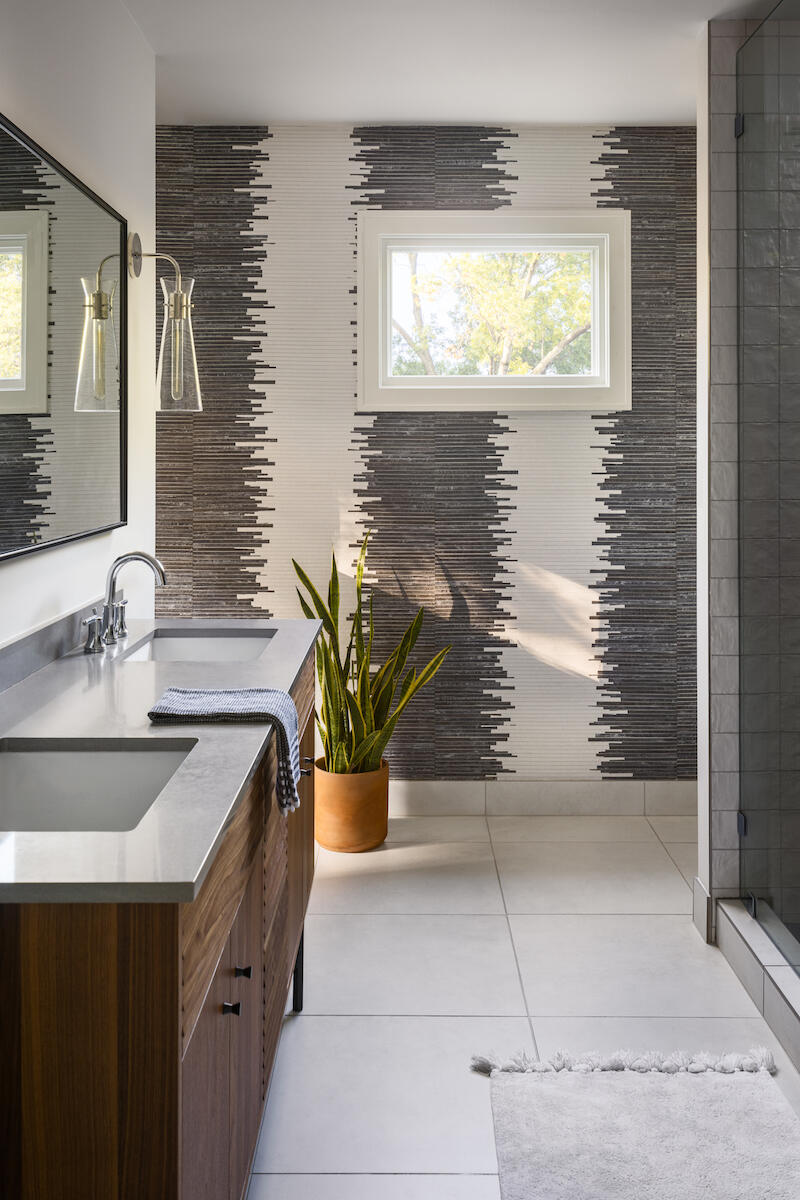
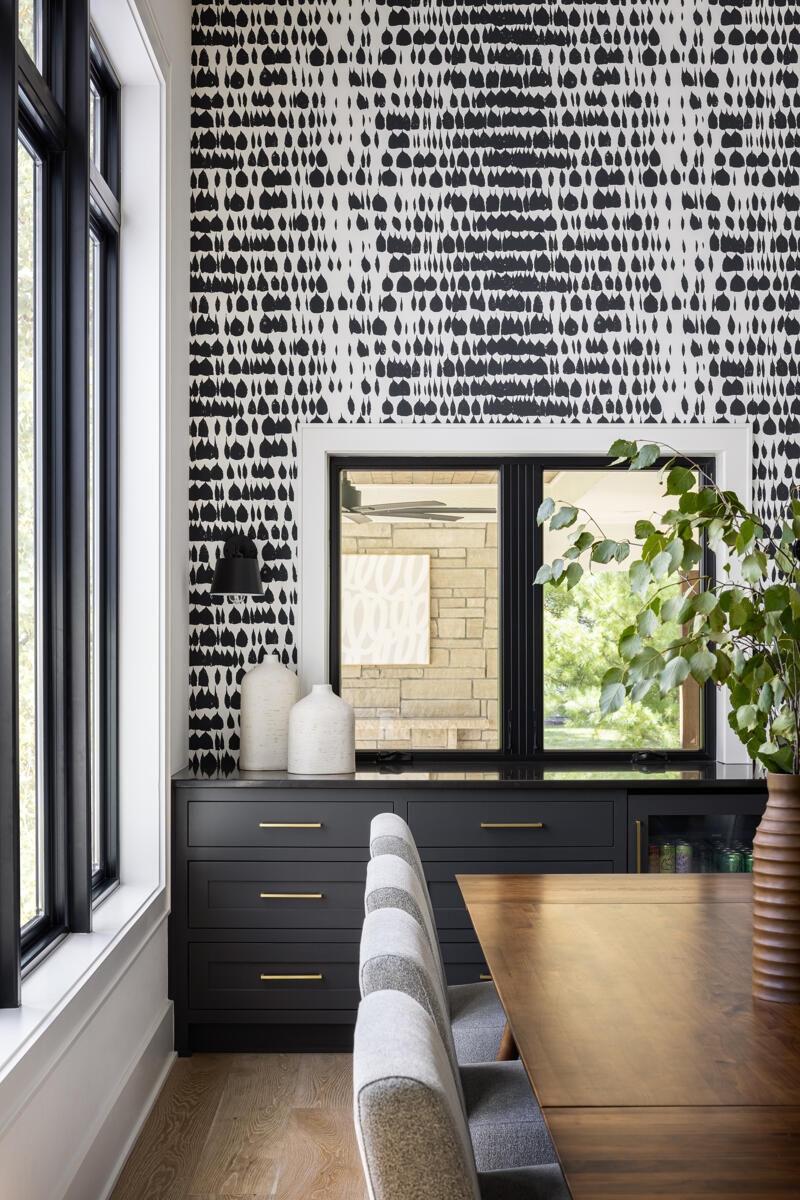
You mentioned pricing this so that it’s profitable. Can you tell me how you’ve approached billing for your work over time?
Because I am so heavily intertwined in the remodeling and home building process with contractors, I know how they are presenting the money talk and cost to clients for the construction projects. I’ve been trying to make the way I bill fit into that [framework] for how a client is seeing it. So if they see contracts from a contractor that say the construction is going to cost this number at the bottom line, and it includes what the contractor is making as cost-plus, they’re used to seeing big numbers and they’re budgeting for it or getting a loan for it. So I’m doing that as well.
It works—and I didn’t like hourly anyway. I do track my hours, so I know how long it takes me to do things. Even as I was getting away from hourly, I would still give an estimate of how many hours I thought it would take me as a range, just to give me wiggle room, so I was already sort of giving a fixed fee even though it was based on my hours. Now that I’ve switched to fees, they’re seeing the bottom line for their construction project, which makes it easier for them to budget—and then if things change, it’s small variables, not giant variables.
I have in my letter of agreement when payments are due at what meetings, so I’m getting paid before the meeting, before the work is done, and it’s broken up evenly over those meetings. Sometimes people will say, “Can I just write you one check?” And I’m like, “Sure.” And then other times, it’s spread out.
So many designers who I talk to really struggle with getting the billing piece right. Do you think dovetailing with the construction process has eased that for you?
I’m probably less scared to talk about money because I’m used to big numbers being thrown out by the contractor and hearing how mostly men are talking about it to their clients. Their lips aren’t quivering when they’re saying it. They’re very matter of fact. So I had to be like, “Why am I so worried about what they’re going to think or what they can afford?” The contractor is like, This is what it is. I have to do the same.
I also don’t have to worry about what time of the month it is to send invoices out, or to have someone going through that. I just know when my meetings get scheduled, which is when that next amount is due. It simplifies my life.
Are you making money from some of the building materials, finishes and furnishings that you’re specifying?
It has become that way. It didn’t used to be. I realized that I was missing out on an opportunity, and I wasn’t really serving my client by not providing that. Now, if I have a client, and then I bring in the contractor or suggest them, then I usually choose certain things that I want to order and they’re OK with that. If [the contractor] has the client first and brings me in, then I honor how they want to do things. I’m definitely ordering more plumbing now, more tile, more lighting fixtures, and when people are hiring us to finish the furniture portion or do wallpaper and windows, then I’m ordering all of that. It’s not my favorite thing to do, but having the two kinds of revenue helps stabilize the business. That’s why I’m doing it—not just to give my client a full service, but also to protect the business.
Have clients responded well to that?
They like to know that I’m working as a team with the contractor. I don’t think they care who’s ordering what or any of that as long as they know my eyes are on it. I think they just have a peace of mind: “Kara’s on it. I don’t need to worry about it.”
I also realized that with large construction projects where lots of windows are changing and there are additions, I was totally leaving all the window treatments on the table when I was not bringing that up early on in the process. And then you have someone move in, and they’re like, “I’m sleeping in this room and there’s no shade.” I used to be so focused on the rest of it. Now I’m like, “This is not good for my client,” so I have to be involved in this portion earlier so that things are ordered and ready.
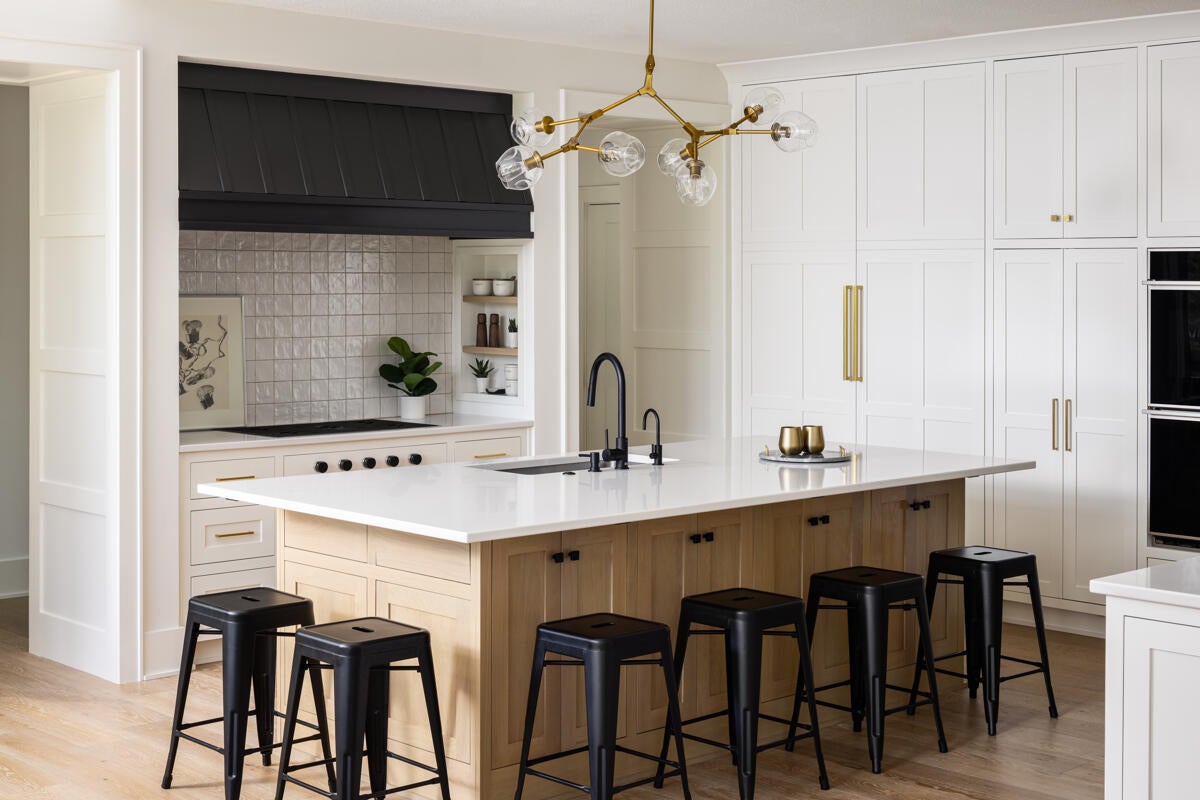
Can you tell me a little bit about your design community in Kansas?
We have a variety of architecture styles, which is super fun. And we have little pockets around [Kansas City] that are kind of known for their unique flair. As far as our clients who live here, they tend to be very practical in what they’re looking for, but they will spend money when they see value. So there’s some great, high-end, beautiful projects. But it seems less about being showy, and more about the person just loving it and wanting to surround themselves with something that’s super functional and beautiful. It’s down-to-earth people that want great design, but more so for their friends and family and less to show to the rest of the world. I’m the one that wants to show it off, but they don’t really care.
As I’ve gotten more involved in the design community in Kansas City, it has become less intimidating. I used to think, like, it’s so secretive and no one will share their practices or talk about how they’re doing things, which is what pushed me into coaching, because I was like, I don’t know how other people are charging or how I compare. But now I’ve gotten to know a lot more designers. It feels a lot more friendly. It feels kind of small town, almost. And not so scary.
Do you shop locally? What are the resources that you use most often?
I do a lot of custom, locally built cabinet construction. A lot of the builders prefer that, because the vendor will also install the cabinets, compared to shipping them in and then having to install the cabinetry themselves. But as far as other goods like lighting and plumbing, a lot of us depend on the local showroom reps. I’m part of a buying group, and even though I could go direct for some of the items, that puts way more responsibility on me. [The group] has a warehouse to house things in, so I don’t have to deal with receiving and delivery, and I know that they’ll fix something if it’s wrong. It helps me feel more like I’m surrounded by a team and less on my own.
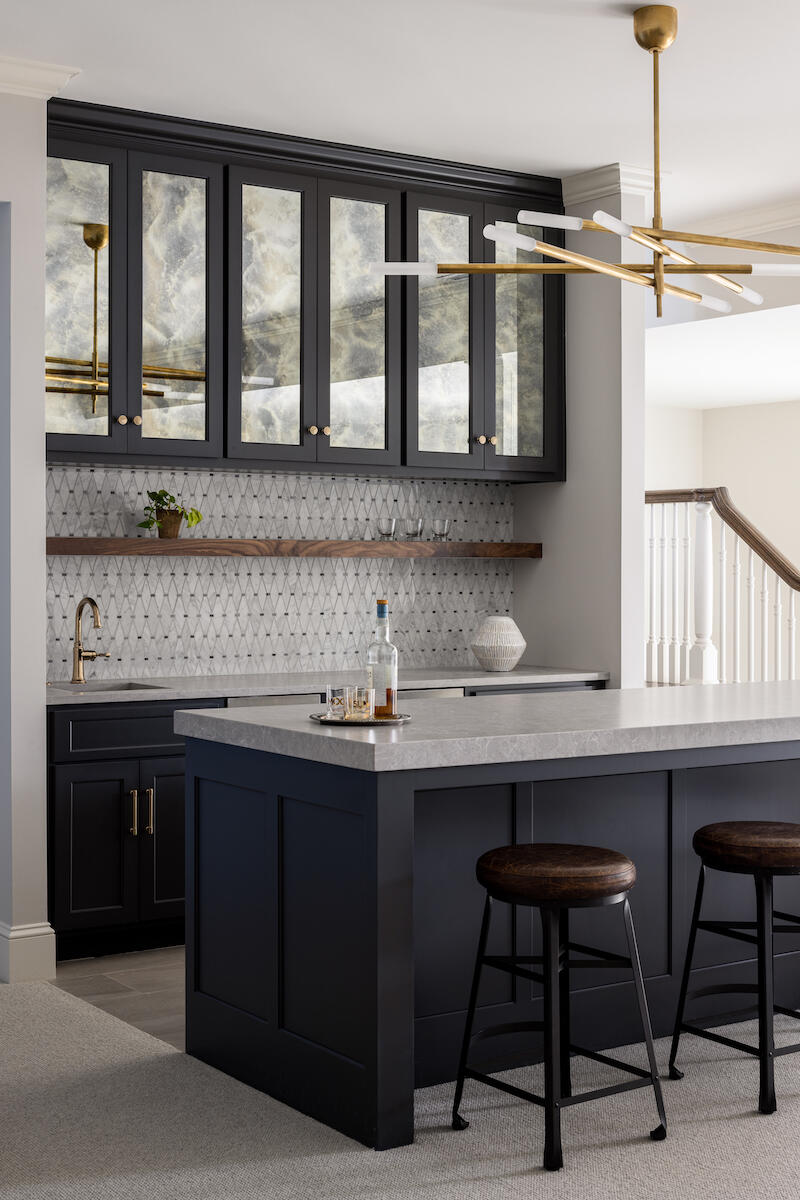
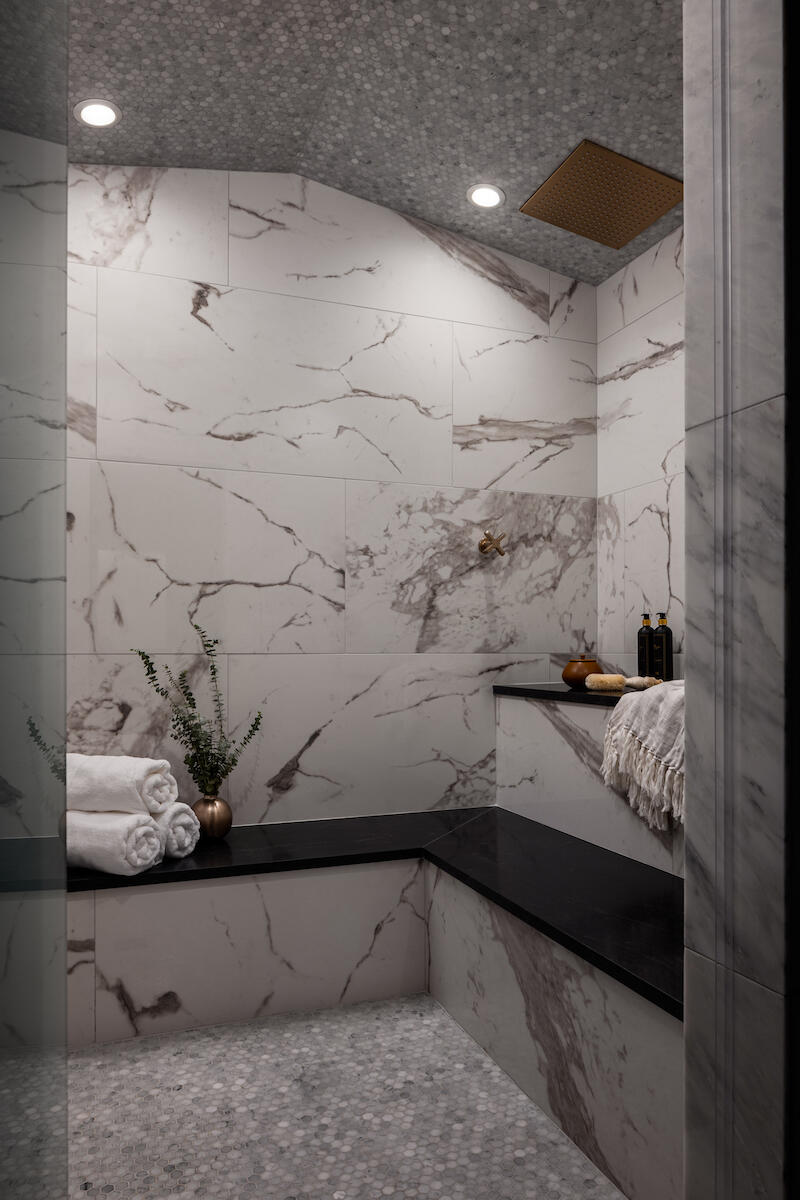
On your site, you mention 3D visuals as a way to help clients understand their project. Can you tell me a little bit about how you incorporated that into your process?
I use SketchUp, and as I learned it while working with other design-build firms in the past, it kind of just naturally became my way of designing in my own head, where I would build up the space in 3D and I’d mess with it until I liked it. And then I used that to make the selections with the client so that they could picture it when we’re looking at a countertop or tile sample. I’m collaborative in nature, so I think I’m a little different than other designers—I don’t make selections and then put it into 3D to sell it to the client. It’s great [when] designers can make all the selections and then hire someone to render it with the exact product. But for me, I haven’t made the product selections yet. I’m just figuring out the space, the colors, the materials and the architecture, and how this feels as a room when you’re in it.
So it’s more my own process that I’m designing in 3D, and that’s why I like to do it myself. And then it can change a little bit after that. The client and I can make tweaks, and because I’m not hiring that out, I can easily do that. And it’s not costing me money every single time there’s a change. And then I use those 3Ds in the documentation set of drawings. Then a lot of my contractors will laminate the views of each space, and then they’ll staple them on the two-by-fours in the room during construction so they know my intent. [Those 3D sketches are helpful for understanding] how the cabinet works and where the trim dies and how the tile goes around the hood and the measurements [for specific spots]. Those are things that are kind of hard to explain to a client—like, what does interior architecture actually mean? I still haven’t quite figured out how to explain it. That process has served me well for having fewer problems during construction—it’s like an insurance plan to make sure the communication is correct.
Some of that early advice you got from your uncle about taking the risk and being an entrepreneur—are you glad you listened to that when you did?
I am. It was really great for the stage of life I was in when I started the business, but also for when I had kids and needed more flexibility. Even though my brain was still thinking a lot about work and I was juggling a lot, it took some pressure off of feeling like I had to answer to someone else other than my clients. I used to say that my clients were my boss—I needed to show up for them and keep them happy. Now, even though, yes, they’re hiring me, I have a lot more boundaries and [personalized systems that work for me].
I’m so glad that I [started my own business]. It suits me and my personality. Now, the next step is me becoming a boss and managing other people—that’s the next endeavor that I’m going to have to get better at, and that’s the next hard part.
What does success look like to you?
It’s when you can have a client walk into their space and go, “I could have never thought of this or achieved this without you. It is beyond what I could have dreamed of, and it’s so much better.” [If] you can provide for your family from that, then life is made. If I’m profitable doing that, I’m super happy. Because then it’s like an equal exchange—they are so thrilled with what I gave them. And I’m so thrilled with what they gave me.
To learn more about Kara Kersten, visit her website or find her on Instagram.





























